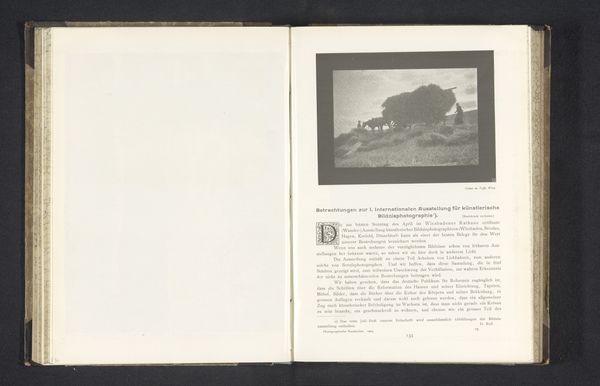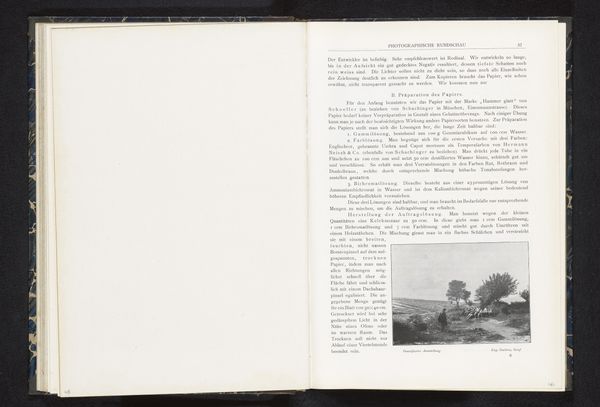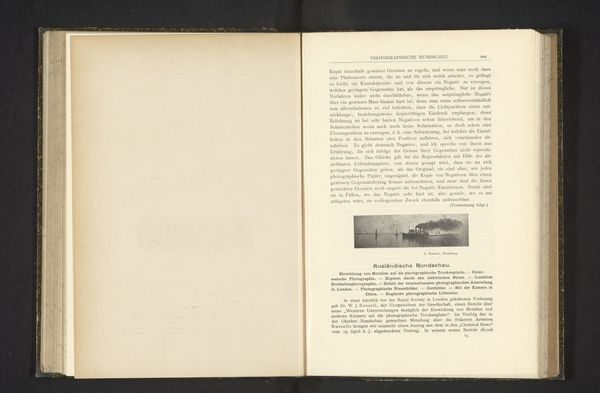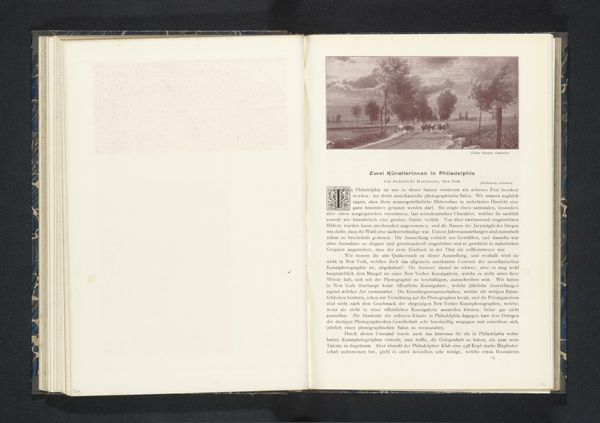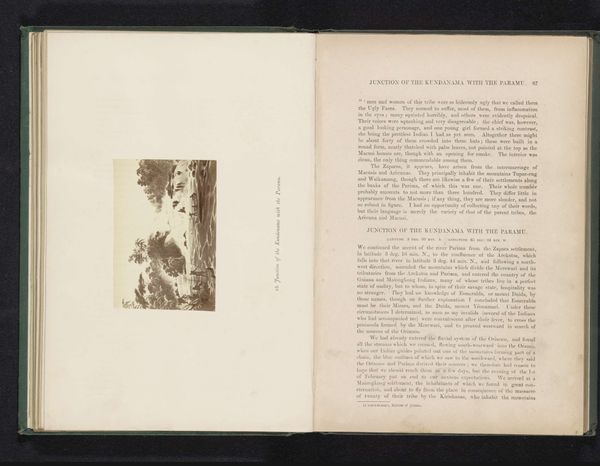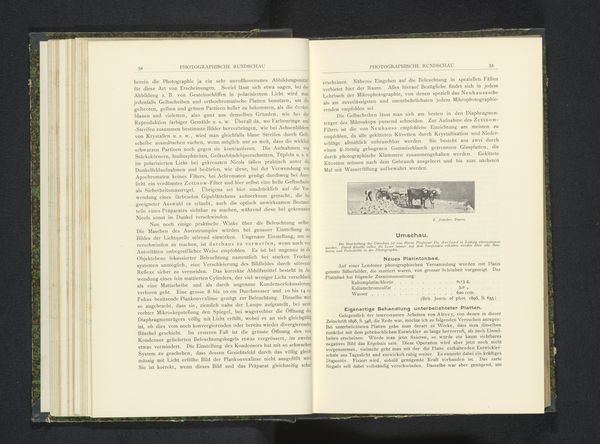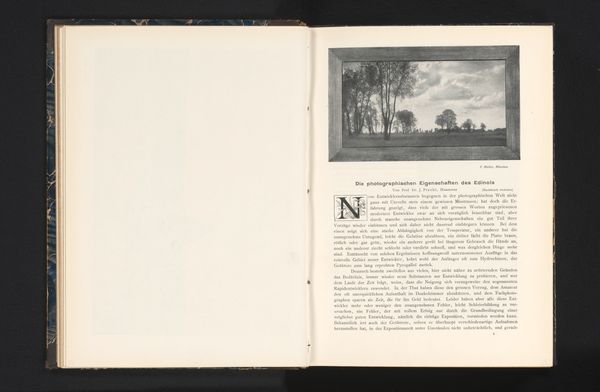
print, textile, photography
# print
#
textile
#
photography
Dimensions: height 47 mm, width 115 mm
Copyright: Rijks Museum: Open Domain
Curator: This image, "Bebossing bij avond," which translates to "Afforestation at Night," created before 1898 by Arthur G. da Cunha, employs photography in what seems to be a printed medium or possibly on textile. Editor: My immediate reaction is that the photo feels like a study in light and shadow. Those trees silhouetted against the dramatic sky evoke a strong sense of foreboding, even a kind of quiet terror, like a stage set for a Gothic novel. Curator: Considering its likely origins, it's crucial to understand da Cunha's photographic and print practices within the framework of late 19th-century aesthetic movements, particularly in the context of the Netherlands' colonial entanglements and artistic responses to industrialization. It's possible that such work aimed to re-assert the supposed natural world. Editor: The choice of imagery itself—the forest as a symbolic space— is fascinating. The forest, often perceived as wild and untamed, is culturally layered with symbolism tied to the collective unconscious. Consider fairy tales and folklore - it may evoke a sense of something unknown and potentially menacing in contrast to civilized spaces. Curator: Precisely. And the term "Afforestation" itself can imply reclamation, the conscious, perhaps aggressive attempt to tame or re-engineer nature—especially in spaces ravaged by the advent of modernity in that period. What narrative of dominance does it speak to, when a land, newly cultivated and captured on photographic printing can be bound into text? Editor: The symbolism feels particularly resonant given the context of colonization you bring up. The imposed will over the untamed and natural—but the tension here exists within that darkness. Look how even in its ordered, silhouetted nature, the scene manages to hold on to a shadow of the eerie. It really demonstrates our intrinsic unease with something "imposed". Curator: I’d add to that— that unease becomes critical as we assess whose "progress" or "improvement" this artwork truly speaks to. Editor: Thinking about it now, it is like looking at a story that is intentionally left unfinished, giving us both comfort and just a slight lingering disturbance. Curator: Yes—a provocation embedded in a seemingly tranquil scene that lingers long after the page is turned.
Comments
No comments
Be the first to comment and join the conversation on the ultimate creative platform.

